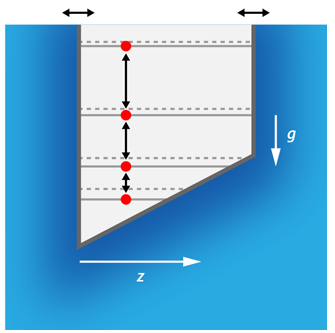I'm reading up on a recent expeirment that used a neutron/gravity spectrometer to look for evidence of dark matter and dark energy. I haven't got to review enough material to say something truly pithy here yet, but I thought I'd point you towards the stuff that's available. First, here's
a discussion of the experiment[1] from Texas A&M's own Dr. Schleich. He's talked about this kind of thing before, (using neutrons for experiments involving gravity). In fact, a little more than a year ago he gave a
talk here on the KC interferometer and how it measured the acceleration due to gravity as opposed to the gravitational redshift as claimed by the authors[2]. His summary of the current set of experiments comes with the added bonus of a pointer to the open access version of the
Physics Review Letters article on the experiment[3]. If you'd like to know how exactly you reflect a neutron from a wall without using coulombic forces which they don't particularly respond to anyway, (the answer has to do with Bragg diffraction), be sure to check out this article on an early test of a neutron interferometer. Sadly, it's not open access, but again with the advice about local university libraries.
References:
1. http://physics.aps.org/articles/v7/39
2. http://copaseticflow.blogspot.com/2013/04/more-on-benchtop-gravitational-redshift.html
3. http://physics.aps.org/featured-article-pdf/10.1103/PhysRevLett.112.151105
4. http://www.sciencedirect.com/science/article/pii/0375960174901327

Comments
Post a Comment
Please leave your comments on this topic: